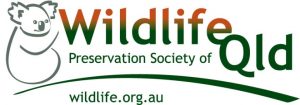In 2019 the Swallowtail and Birdwing Butterfly Trust provided a small grant to the Wildlife Preservation Society of Queensland to assist in the captive breeding and release of the Richmond birdwing in eastern Australia, complementing the support being given by local communities and government.
The programme is necessary to enable the conservation status of this Vulnerable butterfly to be improved, and the threats to its future reversed. It is part of a wider project to rehabilitate birdwing habitat, establish ‘stepping stone’ habitat corridors and ensure the butterfly’s genetic viability. This will, in turn, ensure that the Richmond birdwing continues to have viable populations throughout its range in Queensland and New South Wales.
The specific objective of the grant was to purchase and maintain a rolling stock of foodplant vines (Pararistolochia praevenosa) for use in the captive breeding and release programme and to overcome inbreeding depression in wild populations. The species’ host vine is used to raise eggs and larvae to pupal stage. Larval stages feed for 25-50 days and consume large amounts of leaf material. Once they have pupated they are placed out in their natural habitat, where the adults emerge.
This is a grassroots project where fundamental assistance is being given in order to maximise impact in terms of conservation of this spectacular and popular butterfly. The Trust’s support is a clear indication of the international significance of the work being done by the many volunteers working on behalf of this project in Australia.
This video summarises very beautifully how this important project has been successfully conducted:
More details about this programme may be found in the full project report below:
SBBT-project-report_RBCN_16Oct2019-1
More information is in our section on Featured Species here. A good review of the Richmond Birdwing is also available on Wikipedia here.

